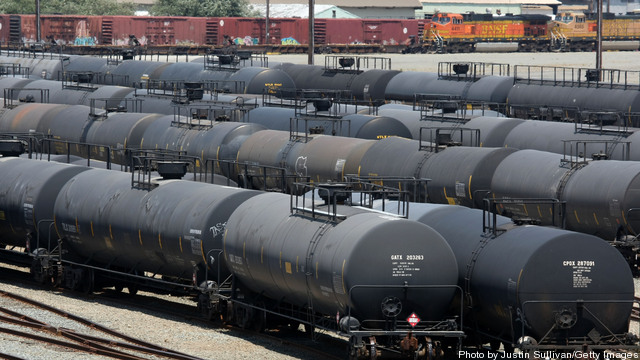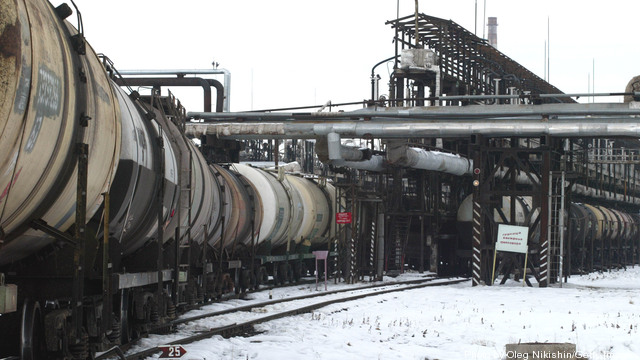According to recent rail industry reports, US freight railroads are estimated to have carried 434,000 carloads of crude oil in the past year. Though oil-by-rail has proven its benefits relating to the efficient transport of oil from upstream to downstream, it has raised significant concerns regarding transportation safety and its environmental impacts. Due to recent freight rail accidents, insurers and government agencies have raised valid concerns over the transport of crude oil-by-rail.
Read additional Breaking Energy coverage of how crude-by-rail benefits refiners here.
The US Department of Transportation (DOT) issued an emergency order (DOT-OST-2014-0067) on May 7th, requiring railroad operating trains containing 1 million gallons of Bakken crude oil or more to notify particular State Emergency Response Commissions (SERCs) regarding the projected movement of such tank cars. The volume of crude oil transported by rail has increased exponentially over the past several years, partially due to rapid development of the Bakken field in North Dakota. Extraction rate increases coupled with limited pipeline infrastructure are forcing producers to move more of their product via rail. The majority of this crude oil is transported from the Bakken field to facilities on the east coast.
The DOT order was issued alongside a joint Safety Advisory by the Pipeline and Hazardous Materials Safety Administration (PHMSA) and the Federal Railroad Administration (FRA) (No. 2014-01), encouraging “offerors and carriers of Bakken crude oil-by-rail tank car to select and use the railroad tank car designs with the highest level of integrity reasonably available within their fleet….” The Safety Advisory further instructs “rail carriers to take additional precautionary measures to enhance the safe shipment of bulk quantities of Bakken crude oil-by- rail throughout the United States”; specifically, that the DOT 111 or CTC 111 cars not be used for Bakken oil.
Shipping crude oil by rail costs between $10 and $15 per barrel, compared to approximately $5 per barrel by pipeline. Upgrading rail cars to meet the recent PHMSA and FRA Safety Advisory would add additional expenses to transporting crude oil-by-rail, raising the costs of delivering oil to consumers; albeit, for good cause. Furthermore, certifying that operations can tolerate an insurer’s inspection could increase costs for oil-by-rail operators. These costs do not reflect the future rise in premiums due to the danger highlighted by recent rail accidents in Canada and Virginia.
According to recent reports, few companies offer liability insurance to railroads. Often, this coverage is limited to less than $50 million per policy, which would provide companies with approximately $1.5 billion in total coverage if they reach their maximum. Railroads typically don’t have enough insurance coverage for crude-by-rail accidents. Crude oil tank car accidents could leave behind billions of dollars’ worth of clean-up costs, legal fees, and claims by the oil company from the loss of product.
Recent rail accidents and pressure to increase safety measures for oil-by-rail could encourage insurance providers to fix a limit to underwriting. Though federal agencies have presented several orders concerning safety measures, insurers are likely to increase oil-by-rail inspections rather than wait for amendments or additional rules to be promulgated by the DOT. The insurance industry’s reaction could be a contributing factor in placing greater pressure on Congress and government agencies to heighten oil-by-rail safety measures and regulation.
Bennett Resnik is a law student at Vermont Law School, a member of the American Bar Association Section on Environment, Energy, and Resources and a member of the International Association for Energy Economics. He has worked in both public and private arenas, focusing on government relations, domestic public policy issues, as well as federal and state energy and environmental regulation.


